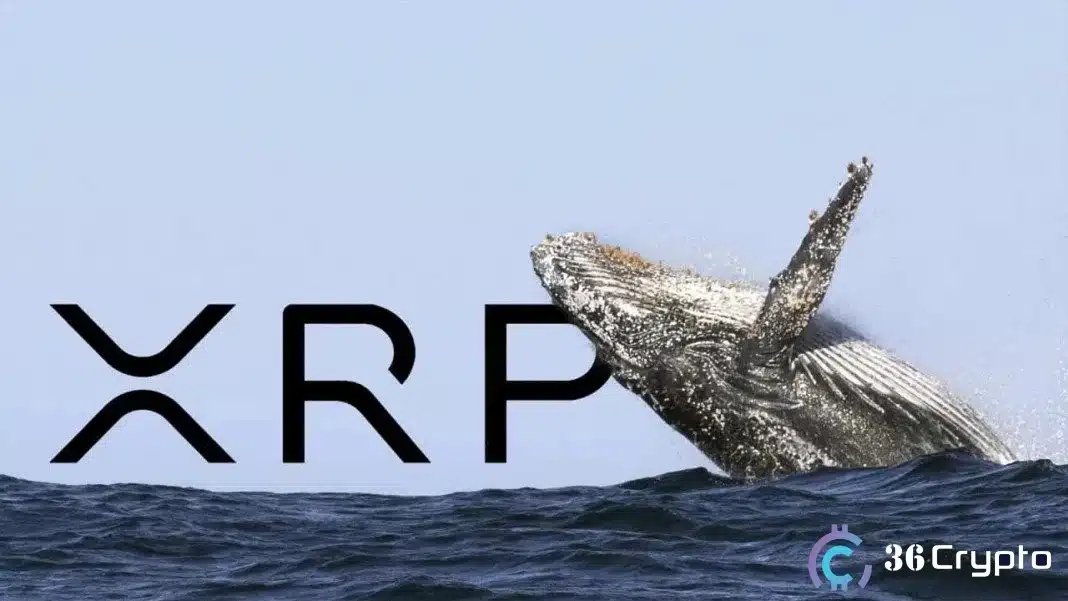How 0G Storage Plans to Solve the $76 Billion Problem Every AI Company Faces
As AI systems consume data at rates never seen before, a question emerges that could define the next decade of technological progress: where will all this data live, and who will control access to it?
\ The answer arrived quietly in September 2025. 0G Labs launched its Aristotle Mainnet, bringing with it a storage layer designed specifically for AI workloads. The launch came with backing from over 100 ecosystem partners, including Chainlink, Google Cloud, Alibaba Cloud, and major wallet providers like Coinbase and MetaMask.
\
The Data Storage Crisis No One is Talking About
\ Every AI system, from chatbots to autonomous vehicles, depends on one fundamental resource: data. Not just any data, but vast quantities that must be stored, accessed, and processed at speeds that push current infrastructure to its limits.
\ The AI-powered storage market reached $30.57 billion in 2024 and analysts project it will grow to $118.38 billion by 2030. Behind these numbers sits a reality that most developers face daily. AI training datasets now require terabytes or petabytes of storage. A facial recognition system alone needs over 450,000 images. Large language models consume millions of text samples. The data never stops growing.
\ Traditional decentralized storage solutions like IPFS, Filecoin, and Arweave were built for different purposes. IPFS acts as a protocol for content addressing but lacks persistence guarantees. Filecoin creates a marketplace for storage but requires continuous deal renewals. Arweave offers permanent storage through one-time payments but faces challenges with cost and retrieval speed. None were designed for the rapid updates, structured querying, and millisecond-level performance that AI applications demand.
\ Michael Heinrich, CEO and co-founder of 0G Labs, stated in the mainnet announcement: "Our mission at 0G is to make AI a public good, which involves dismantling barriers, whether geopolitical or technological, and this launch marks a milestone in that journey. I could not be more proud of the 100-plus partners who are standing with us from day one. Together, we are building the first AI chain with a complete modular decentralized operating system, ensuring AI is not locked away in Big Tech silos but made available as a resource for everyone."
\
What Makes 0G Storage Different
0G Storage operates through a dual-layer architecture that separates concerns in a way that existing protocols do not. The Log Layer handles unstructured data like model weights, datasets, and event logs through an append-only system. Every entry receives a timestamp and permanent record. Data gets split into chunks, erasure coded, and distributed across the network for redundancy.
\ The Key-Value Layer sits above this foundation, enabling structured queries with millisecond performance. This layer allows applications to store and retrieve specific data points such as vector embeddings, user states, or metadata while maintaining immutability through logging every update.
\ This architecture enables real-world use cases already in motion: AI agents retrieving context on demand, DePIN networks streaming sensor data, LLM pipelines accessing training data, and applications persisting state data across chains.
\ Performance benchmarks from the V3 testnet demonstrate the system's capabilities. 0G Storage achieved 2 GB per second in throughput, which the team describes as the fastest performance recorded in decentralized AI infrastructure. The Galileo testnet delivered a 70% throughput increase over previous versions and can process up to 2,500 transactions per second using optimized CometBFT consensus.
\ Security comes through cryptographic commitments for all stored data, allowing every operation to be tracked and verified. The system uses Proof of Replication and Availability, where storage providers face random challenges to prove they hold specific data. Failure to respond results in slashed rewards.
\
The Economics of Keeping Data Alive
Storage at AI scale presents not just technical challenges but economic ones. 0G introduces a three-part incentive structure that balances cost with long-term availability. Users pay a one-time storage fee based on data size. A portion of this fee becomes a Storage Endowment, streamed over time to storage miners for continued availability. The system adds Data Sharing Royalties, where nodes earn rewards for helping others retrieve and validate data through PoRA challenges.
\ This model contrasts with competitors. Filecoin operates on ongoing storage deals that require continuous renewal. Arweave charges higher upfront costs for permanent storage, which can become prohibitive for large datasets. IPFS lacks built-in economic incentives entirely, making data persistence dependent on manual pinning or third-party services.
\ The network went live with operational infrastructure from day one. Validators, DeFi protocols, and developer platforms provide indexing, SDKs, RPCs, and security services ready for production workloads.
\
The Platform Making It Visible
StorageScan serves as the transparency layer for 0G Storage. The platform received updates in May 2025 that added real-time analytics, miner leaderboards, and reward tracking for both Turbo and Standard storage nodes.
\ The interface splits networks by performance tier. Standard Network uses HDD storage for cost efficiency with less time-sensitive data. Turbo Network deploys SSD storage for applications requiring faster access. Storage providers can track earnings across 24-hour, 3-day, and 7-day periods, giving visibility into node performance and optimization opportunities.
\ This transparency addresses a gap in existing decentralized storage systems, where providers often lack clear insights into network operations and reward distribution.
\
Where This Fits in the Bigger Picture
0G Labs raised $35 million across two equity rounds to support development. The mainnet launch follows extensive testing. The Testnet V3, called Galileo, saw 2.5 million unique wallets, 350 million-plus transactions, and roughly 530,000 smart contracts deployed.
\ The storage market context matters here. Mordor Intelligence values the AI-powered storage market at $27.06 billion in 2025 and projects $76.6 billion by 2030. Cloud storage will reach $137.3 billion by 2025 according to market research firms. Analysis from 2023 indicated that decentralized storage costs roughly 78% less than centralized alternatives, with enterprise-level differences reaching 121 times.
\ Yet adoption remains limited. Centralized storage still dominates due to better user experience and mature product ecosystems. The challenge for 0G and similar platforms lies in bridging this gap while providing the performance characteristics that AI applications require.
\
The Composability Factor
0G Storage operates as a modular system. Developers can integrate it into existing applications, use it with or without the 0G chain, or plug it into custom rollups or virtual machines. This design philosophy differs from closed ecosystems that lock users into specific architectures.
\ The platform supports applications across chains and intelligent agents, positioning storage as infrastructure rather than a siloed service. This approach aligns with how developers increasingly build applications that span multiple blockchains and execution environments.
\
What Comes Next
The mainnet launch represents a starting point rather than a destination. AI data requirements continue to grow. The global AI training dataset market reached $2.6 billion in 2024 and analysts project $8.6 billion by 2030. By 2025, 181 zettabytes of data will be generated globally.
\ Storage infrastructure that can handle this scale while maintaining decentralization, verifiability, and performance will determine which AI systems can operate independently of centralized control. The question is no longer whether AI needs better storage infrastructure. The question is whether solutions like 0G Storage can deliver on promises that existing systems cannot fulfill.
\ For developers building AI agents, DePIN networks, or applications requiring persistent state across chains, the availability of production-ready infrastructure changes what becomes possible. For the broader blockchain ecosystem, it tests whether decentralized systems can compete with centralized alternatives on performance rather than just ideology.
\ The data keeps growing. The models keep getting larger. The question of where to store it all and who controls access matters more with each passing month. 0G Storage enters a market where the stakes extend beyond technology into questions of access, control, and what it means to build AI systems that no single entity can shut down.
\
Final Thoughts
The launch of 0G Storage on mainnet arrives at a moment when AI infrastructure faces real constraints. Traditional decentralized storage protocols struggle with the performance demands of AI workloads. Centralized solutions maintain control over data access in ways that conflict with the vision of open AI systems.
\ What 0G Storage offers is not revolutionary in concept but potentially transformative in execution. The dual-layer architecture addresses real pain points that developers face. The economic model creates incentives for long-term data availability without the recurring costs that make existing solutions prohibitive at scale. The modular design enables integration across ecosystems rather than forcing lock-in.
\ Whether this translates to widespread adoption depends on factors beyond technology. Developers must choose to build on it. Storage providers must find the economics attractive enough to participate. The performance must hold up under real-world load. The ecosystem must continue to grow and attract the applications that justify the infrastructure.
\ The data storage crisis facing AI development will not resolve itself. As models grow larger and applications more complex, the infrastructure question becomes more urgent. 0G Storage presents one answer to this challenge. Time will tell if it becomes the answer that the industry needs.
Don’t forget to like and share the story!
:::tip This author is an independent contributor publishing via our business blogging program. HackerNoon has reviewed the report for quality, but the claims herein belong to the author. #DYO
:::
\
You May Also Like

Whales Dump 200 Million XRP in Just 2 Weeks – Is XRP’s Price on the Verge of Collapse?

Bitcoin RSI Just Crashed Below 50 – Here’s What Happened The Last Time
